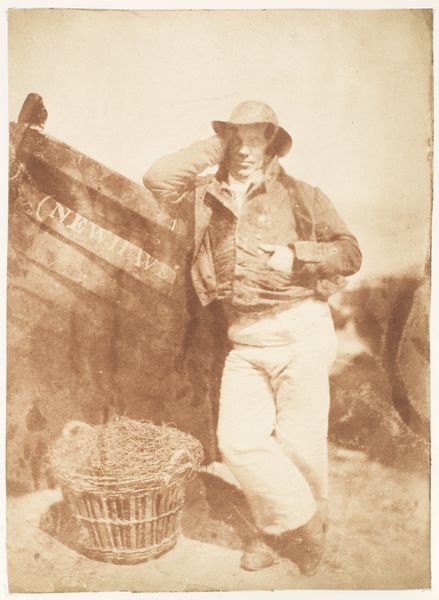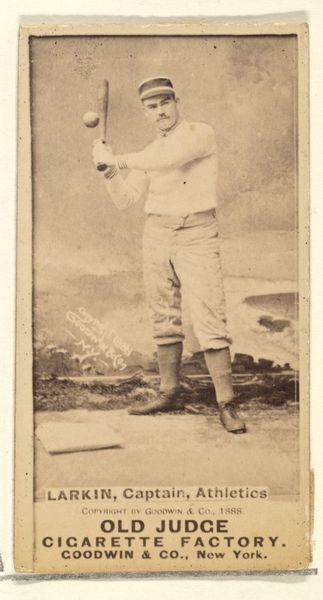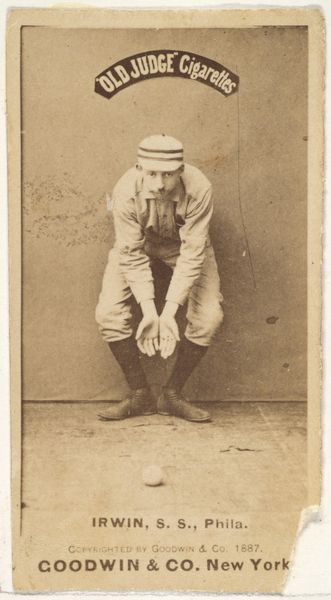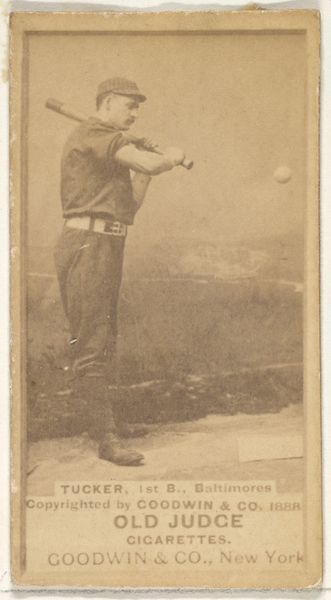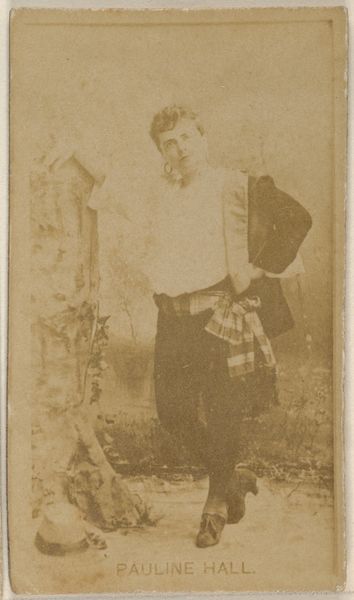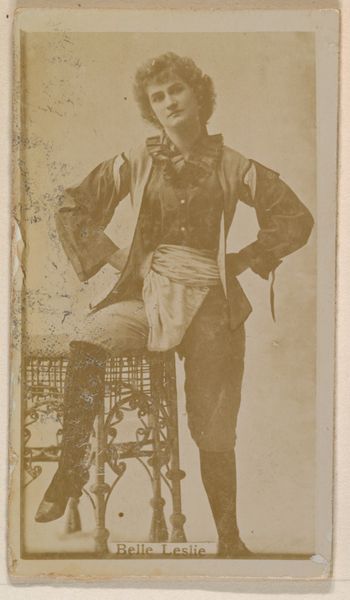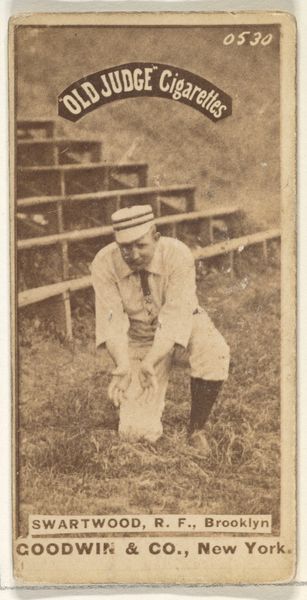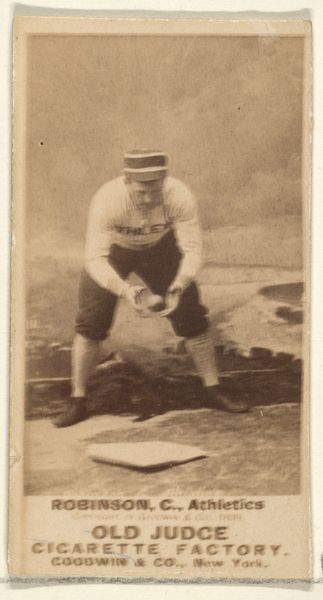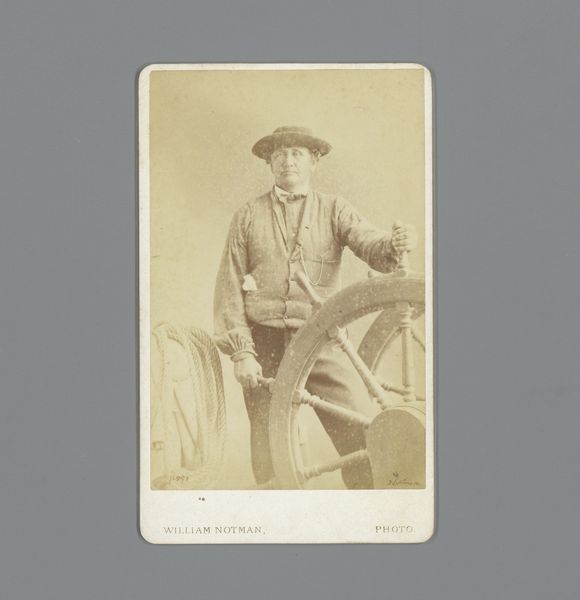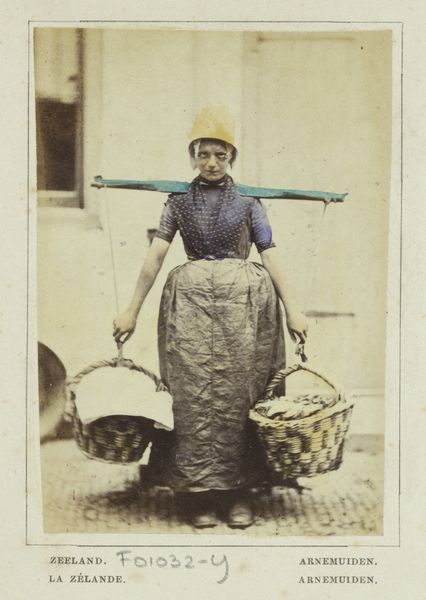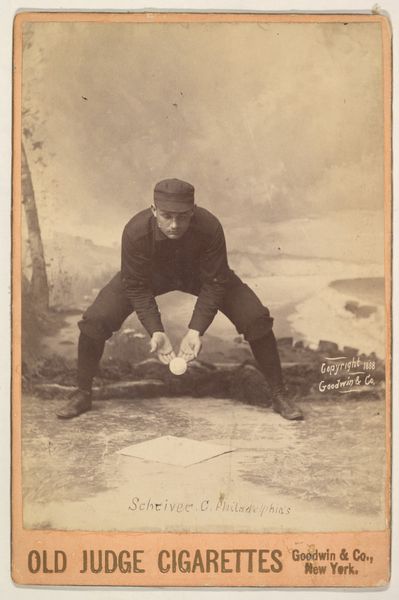![[Man with Helmet] by Oscar Gustav Rejlander](/_next/image?url=https%3A%2F%2Fd2w8kbdekdi1gv.cloudfront.net%2FeyJidWNrZXQiOiAiYXJ0ZXJhLWltYWdlcy1idWNrZXQiLCAia2V5IjogImFydHdvcmtzLzgxZTZhN2QyLTVhM2UtNGJhYi05MzUzLTlmMmUxMjFhNmE4OS84MWU2YTdkMi01YTNlLTRiYWItOTM1My05ZjJlMTIxYTZhODlfZnVsbC5qcGciLCAiZWRpdHMiOiB7InJlc2l6ZSI6IHsid2lkdGgiOiAxOTIwLCAiaGVpZ2h0IjogMTkyMCwgImZpdCI6ICJpbnNpZGUifX19&w=3840&q=75)
Dimensions: Image: 4 7/16 × 5 1/4 in. (11.3 × 13.3 cm), irregularly trimmed First Mount: 5 7/16 × 6 1/8 in. (13.8 × 15.6 cm) Second Mount: 13 1/4 × 10 1/16 in. (33.6 × 25.5 cm)
Copyright: Public Domain
Curator: Looking at this print, I see someone rummaging in grandma's attic and emerging triumphant, but the atmosphere feels strangely weighted, don’t you think? Editor: Indeed, it's got this captivating solemnity. What we're seeing is Oscar Gustav Rejlander’s "Man with Helmet," dating back to 1858. It’s a gelatin silver print and, quite early on, part of the photography collection right here at the Met. Curator: Silver gelatin! That explains the haunting depth. And it being a portrait turns this unexpected historical cosplay into something wonderfully intimate and immediate, as if from a time long gone, but near and raw nonetheless. What's the story here? Editor: Rejlander was a pioneer, one of the first to use combination printing—melding multiple negatives into a single image, and with an obvious taste for historical theatre and allegory. Curator: So, that means it's a Frankenstein photograph! Bits and pieces stitched together to create... what, exactly? The banality of armor? The preposterousness of heroism? Editor: Perhaps it critiques those very concepts, juxtaposing the grand imagery of historical painting with the new medium of photography. Curator: Almost punk! Deflating self-importance through a sepia filter. Editor: His staged historical tableau and its focus on armor and accoutrement suggest a longing to engage the historical subject within contemporary photography, particularly portraiture, at mid-century. Curator: Still, there's something truly magical about the picture—I could get lost staring into its texture for days. I love the contrast with this helmet versus the otherwise drab surrounding tones; you feel the sheer gravity in how the model carries this. Editor: Precisely, this tension between everyday details and posed artifice, the past and the present is so utterly Rejlander. I can admire an earnest yet critical interpretation of portraiture in his early approach to fine-art photography. Curator: Yes, an artist, using photography and not to become a historian, yet producing documents like this for ages to follow. How remarkable.
Comments
No comments
Be the first to comment and join the conversation on the ultimate creative platform.
